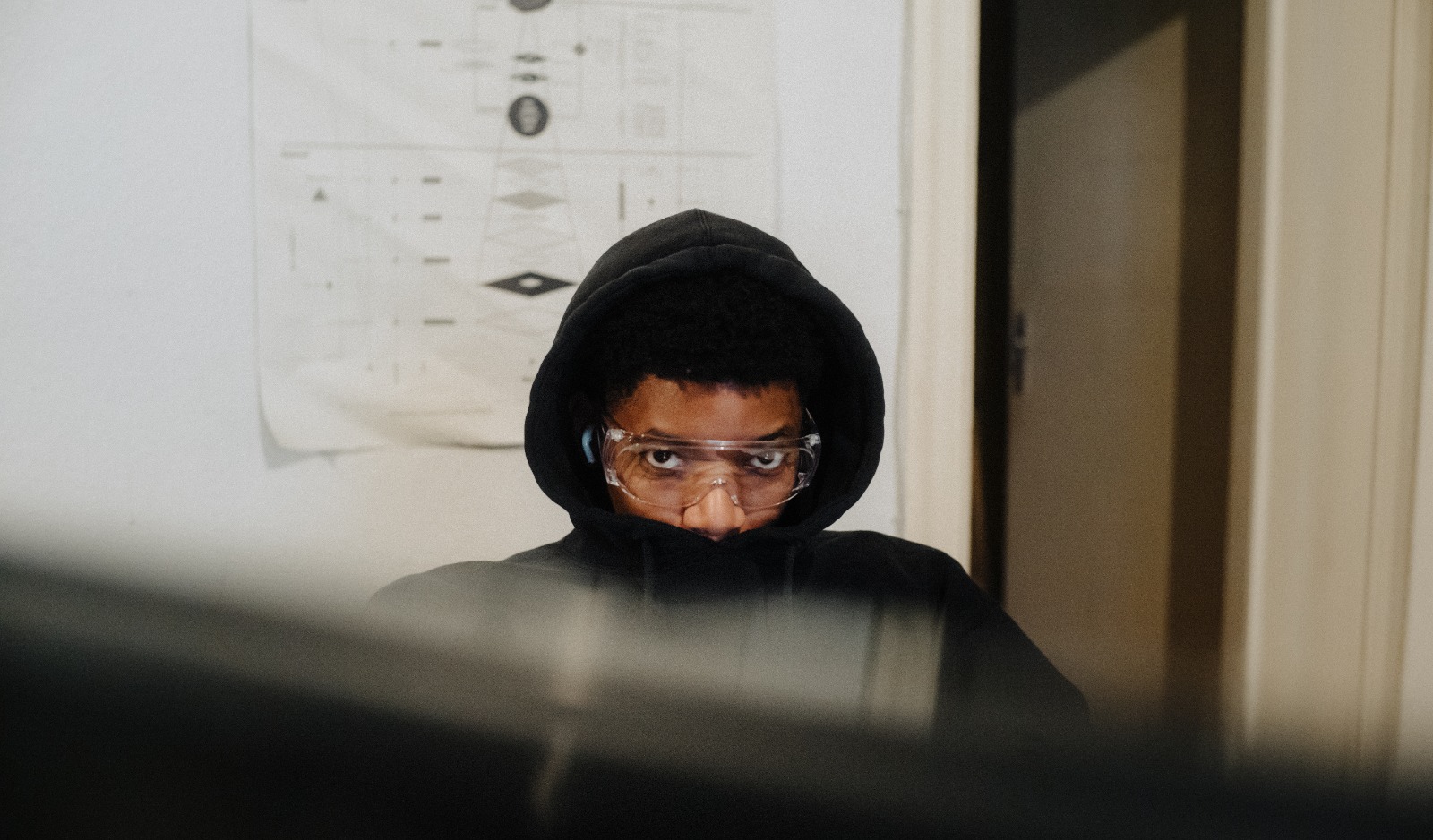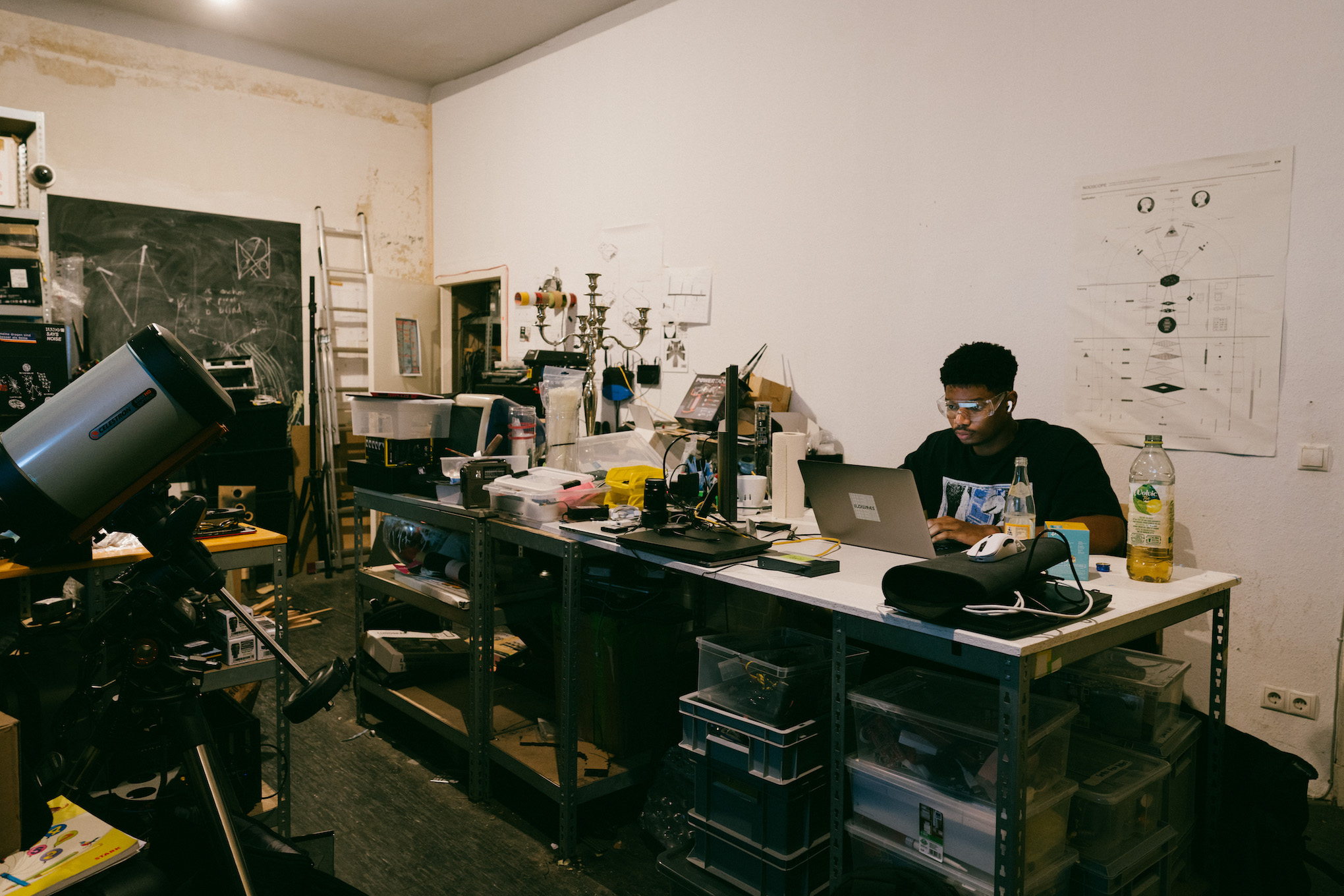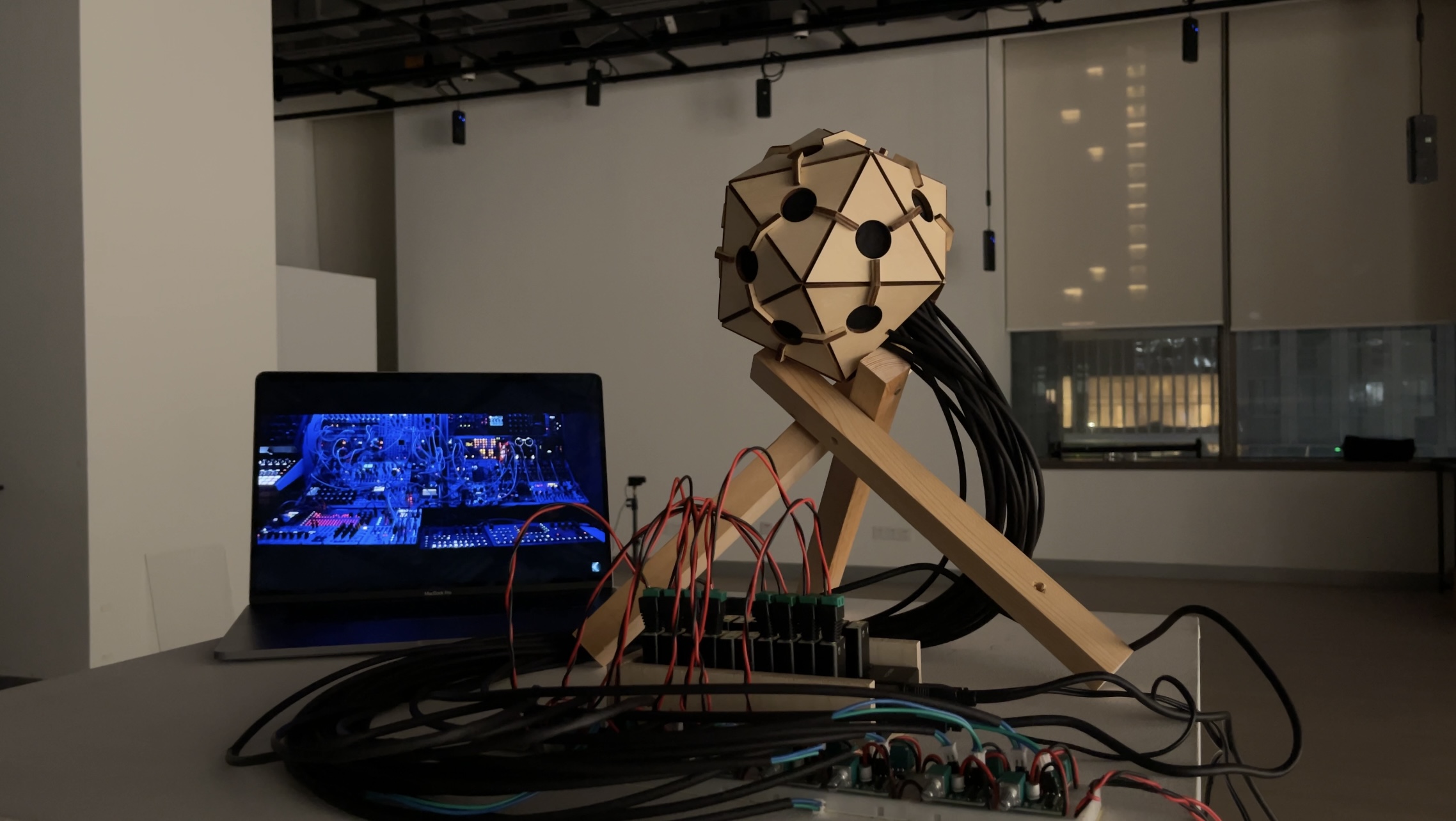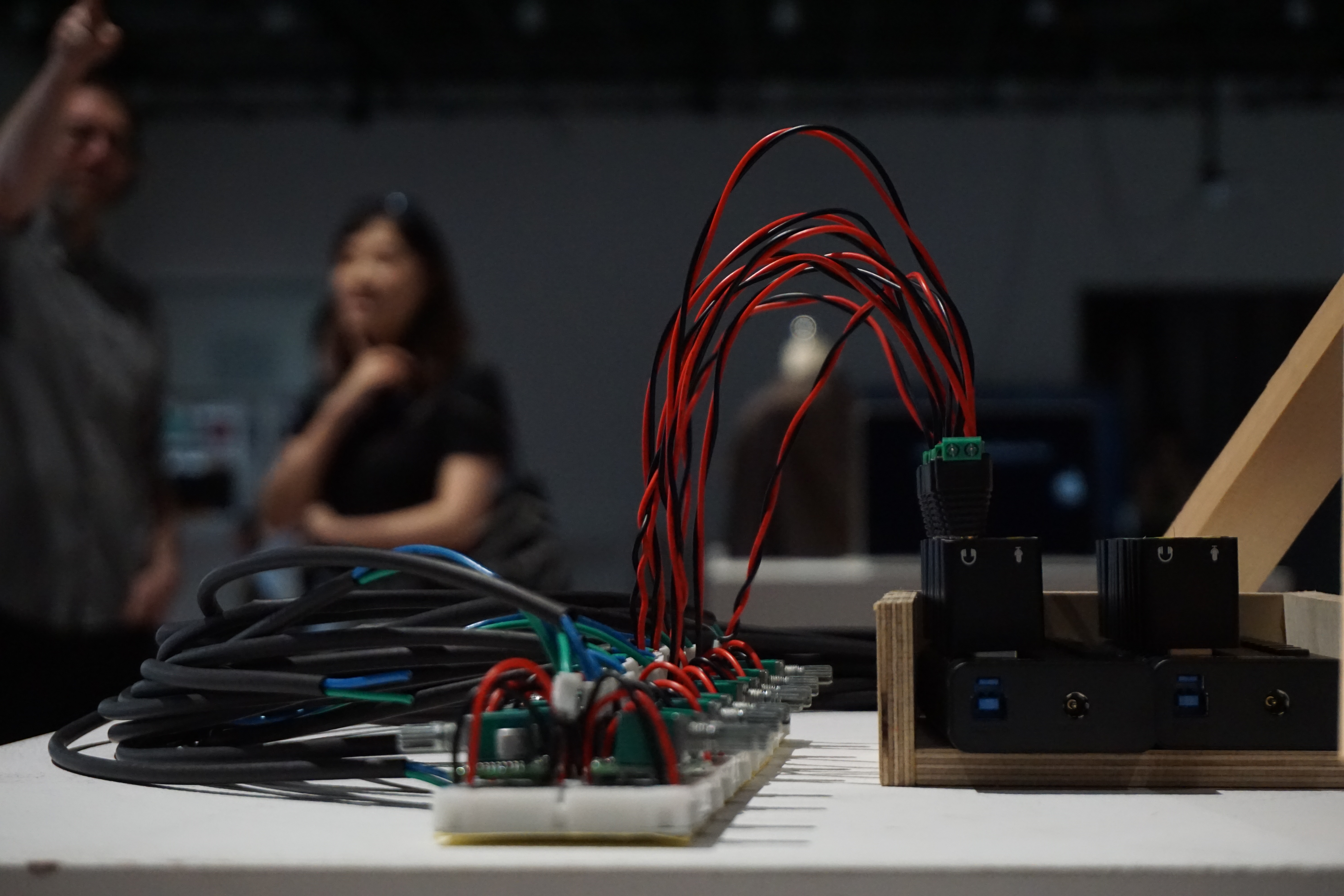“Dad! Can you drive me to Home Depot?” Sehmon Burnam, an eighth grader, said to his dad after earning some extra cash shoveling snow in his snowy New Jersey neighborhood. His mission was to acquire 200 feet of PVC pipe, for an idea he had stumbled upon while watching a YouTube video. The video featured someone creating a PVC xylophone, a musical keyboard constructed from large plastic pipes. Striking the pipes produced a range of unique notes, each note corresponding to a different pipe length. Armed with measurements and calculations, he embarked on the task of creating his own PVC xylophone. He couldn't explain why he wanted to build it; he just knew he had to.
Growing up, Burnam had been a serial creator, brimming with ideas and concepts, each one eager to find its place in the tangible world. He frequented websites like Instructables and magazines such as Make, immersing himself in the maker culture of the early 2000s. “My interest for art has always been there. I just slowly grew to find out what exactly that interest was,” said Burnam.

In Fall 2023, Burnam graduated from the MA in Interactive Media Arts program, jointly offered by NYU Shanghai and NYU Tisch School of the Arts.
In his reflections on the program, Burnam held dear the profound appreciation he gained for the concept of context. “The IMA program really helped me understand the transformative power of the environments and people surrounding me.” Burnam reminisced. While he acknowledged the program's many merits, the in-person sessions were the component he valued the most. He recounted the unique experiences he had in various global locations, such as Berlin and Shanghai, where he had the chance to interact with fellow artists, curators, and program directors. These encounters allowed him to gain invaluable insights into different artistic communities and ways of life. “These experiences couldn't be replicated merely by visiting as a tourist,” Burnam said, “They required genuine connections and relationships.”
One particularly memorable moment occurred during a visit to a fine art museum in Shenzhen. Surrounded by works of art by renowned artists he had admired from afar, Burnam had the opportunity to engage with the pieces in person. The experience left a lasting impression on him, and it was during the ride back to the airport, with the warm summer rain tapping on the car's windows, that he had a profound realization. As he scrolled through his phone, browsing Taobao to locate speaker components for his thesis project, he said to himself "What the hell am I doing here?" Yet, in that moment, amidst the rain and lush greenery of Shenzhen's highways, he felt an extraordinary sense of belonging.
The experiences in the program and Burnam’s longtime immersion in the world of art influenced him profoundly, opening his eyes to the vastness of the world and the multitude of ways in which people could live their lives. He found in art a means to touch upon the sublime, to explore human spirituality and human experience. One vivid example that occupied his thoughts was live music. To him, it represented a transcendent experience, a gateway to the sublime, where bodies moved in harmony to the same beat. “It was a feeling of being part of something larger and embracing the collective experiences.”

Fueled by this fascination, Burnam set out to create interactive experiences that could tap into the essence of the sublime and recognize the various forces that shaped human existence, from the technological realm to the natural world. He believed in the capacity of these formidable forces to prompt reflection on the individual and to foster connections among people. His deep dive into the concept of the sublime led him to extensive research, in the pursuit of crafting interactive encounters that would awaken this sense of the sublime.
Ultimately, he arrived at a project he would come to name "Daydreams of Simulacra ," a project that delved into the realm of artificial intelligence and machine learning. He saw these technologies as mirrors of human culture and human conversation, particularly large language models like ChatGPT and Bard, which harnessed the vast expanse of human knowledge and interaction.
"Daydreams of Simulacra" aimed to serve as an auditory mirror of human connection using machine learning. “Picture entering a room adorned with a sculpture, its walls lined with 19 multi-channel audio speakers,” Burnam illustrated, “These speakers played a symphony of voicemail conversations—mothers to sons, friends to friends—a chorus of human voices captured in the voicemails left on our phones.” Amid this orchestrated cacophony, the audience would find themselves enveloped in simulated human conversations, a reminder of the constant stream of communication happening in our lives.

As the audience moved through the space, the project would prompt them to reflect on the collective human experience. The voices overlapped, making it challenging to distinguish one from the other; yet each voicemail carried a slice of humanity within it. The words of a grandmother checking in on her loved ones, for instance, would possibly prompt the audience to reflect on their own family bonds and personal experiences. It was a machine learning model speaking, but the voices derived from the rich human interactions, a reminder that human beings were all part of this vast collective.
His fascination with the project extended beyond technology. It also mirrored his love for urban life, particularly in bustling cities like New York. In these urban jungles, he saw in the flesh what his project was trying to depict: a multitude of lives intersecting and coexisting. “I can’t help but be amazed by just how many different lives are being lived.”
In the end, his goal was clear: to create artifacts of reflection, to manifest sublime technologies that encompassed the dance between humanity and the machine, inviting all who encountered them to partake in the symphony of human culture and connection.

Burnam expressed excitement about the future of AI and what he could do with it. “We have to recognize that it is here to stay. Current generative models, including Bard and ChatGPT are merely the beginning,” he opined, “They are only going to become more adept. The ChatGPT of today is the worst it will ever be.” To him, AI was more like a creative partner. While some might opt to maintain a strictly humanistic approach to their work, he argued that the line between technology and nature is blurred. “Humans are part of nature, and they have created technology. The distinctions aren’t clear-cut as they seem.” Burnam acknowledged the existence of AI-generated music but believed that people would always seek a connection with the human behind the art. The human touch, he asserted, would remain a core element in the creative process. In his eyes, while machines could come close, they wouldn’t quite replace the intricacy of human creativity.


